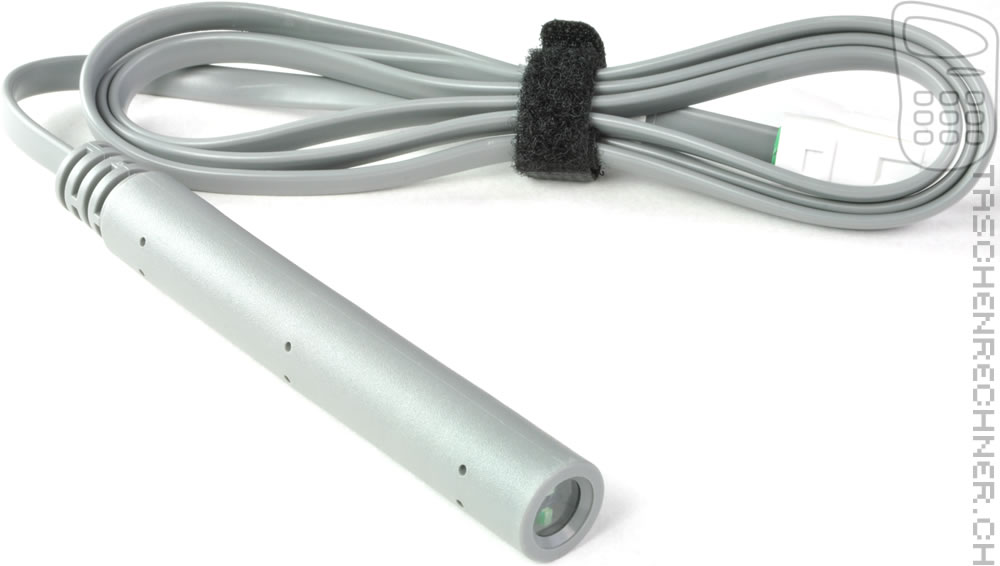- The TI Light Probe is an inexpensive light sensor that uses a phototransistor to measure irradiance, the measure of electromagnetic power per unit area. The sensor is best used for relative or comparative measurements. The sensor’s spectral response is between 300 nm and 1100 nm so it measures UV, visible, and infrared light. The infrared capabilities of the sensor allow it to be used for investigations outside the visible spectrum. An excellent example of an appropriate use of this sensor would be to compare the reflectivity of different surfaces. In this type of experiment, you are looking for relative changes in reflected light from different surfaces rather than an absolute value.
Other typical uses of the TI Light Probe include:
- Investigating the inverse square law of light
- Measuring the flicker of fluorescent lights
- Measuring changes in light intensity for crossed polarizers
- Investigating the refresh rate of a television or CRT computer monitor
- Studying IR signals from remote controls for TVs, VCRs, DVDs, etc.
- The range of the sensor is between approximately 10microW/cm2 and 1mW/cm2. The maximum reading is equivalent to a 100 W light bulb placed at a distance of approximately 0.5 m from the sensor; therefore, the sensor cannot be used to measure the sun’s irradiance. The accuracy of the sensor is +/-20%. This variation in accuracy affects the types of uses for this sensor. The lack of sensor accuracy is a drawback in experiments that require accuracy. For example, you might be interested in measuring the light Output of a small DC lamp and comparing it to the electrical energy power used by the DC lamp. In such an experiment, accuracy would be important and another sensor would be more appropriate. Most Vernier data-collection programs do not assign a unit to the sensor measurement since the sensor is used for relative measurements. Instead the unit is omitted, and it is understood that the reading is a relative measurement.

